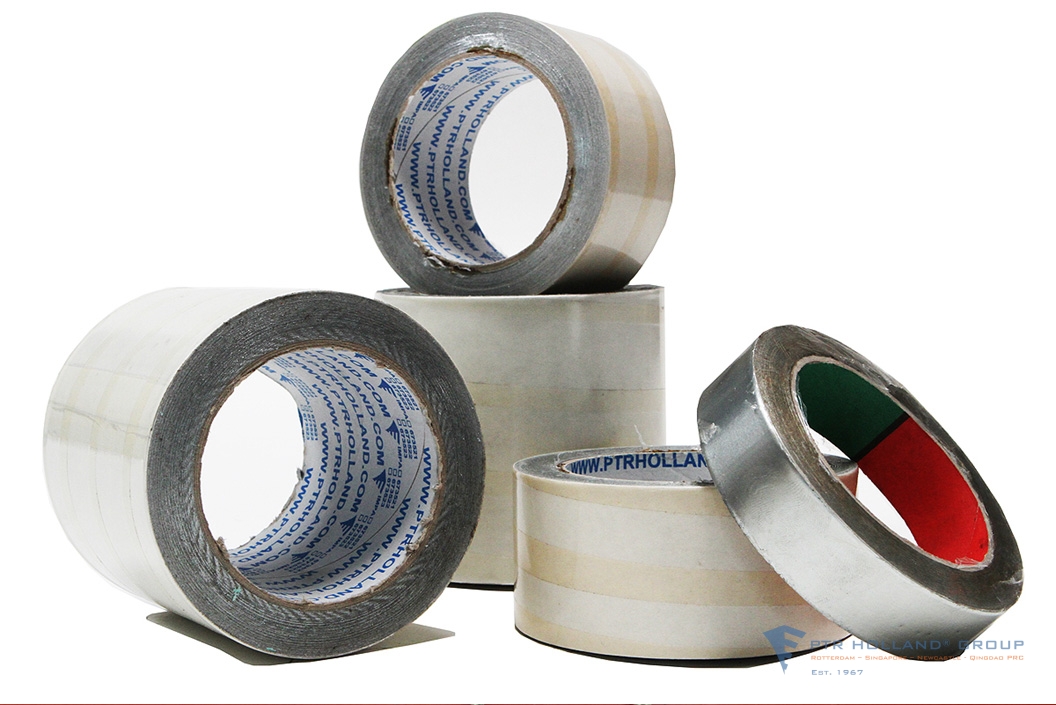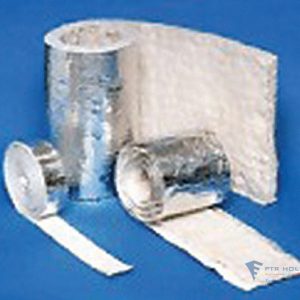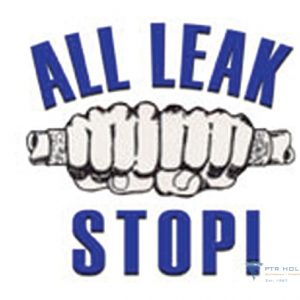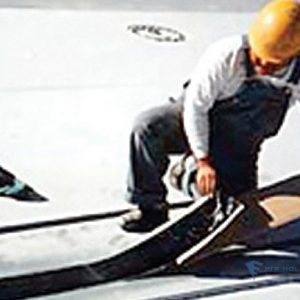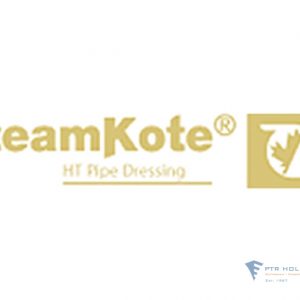Zinc Tape
Highly effective anticorrosive tape developed with a base film of adhesive molten galvanized zinc. Zinc coated layer will not be infiltrated by water, gas, etc. and will not age from ultraviolet rays, so corrosion does not develop from the inner layer.
As the zinc layer of this tape is thick and uniform, it lasts longer than a molten galvanized coating. It can be easily applied and will prevent corrosion at jointed steel parts or pipes.
| Code | Width | Length | Thick |
|---|---|---|---|
| 67 35 21 | 25 mm | 20 mtr | 0.1mm |
| 67 35 22 | 50 mm | 20 mtr | 0.1mm |
| 67 35 23 | 100 mm | 20 mtr | 0.1mm |
The product consists of a zinc tape of high pureness (99.99% of the chemical mass of zinc) with a nominal thickness of 0.080 mm. This tape is supplied with a 0.025 mm thick adhesive, which can continuous operating temperature of 80 C and which reacts under electro-conductive pressure. The adhesive layer is covered by a siliconised paper, which protects the band from getting damaged or polluted until the tape is applied. The product, denominated “Zinc Tape”, is available in two forms:
- in rolls, whose width and length are shown in the table above
- in shapes, based on the client’s needs.
Technical description
ZincTape is designed to cover the surface of iron, steel aluminium and light metals in order to protect them from corrosion. This is achieved by pressing it on the surface that needs to be protected form corrosion. This method is commonly known as “Coating with a zinc layer”.
The adhesive coat, which is applied only on one side of the zinc tape, consists of a matrix of adhesive and a percentage of zinc powder. Through the addition of zinc powder we have achieved the most important effect, which is making the adhesive itself electro conductive. This process allows the adhesive to create an electrical couple between the surface that needs to be protected and the ZincTape, so that the zinc can act as galvanic anode.
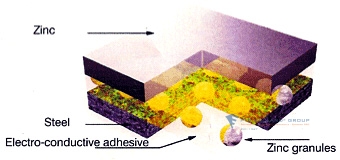 The enlargement on the left shows the application of our ZincTape on a steel surface. It can be seen that the thickness of the adhesive layer always remains the same and that the zinc granules are dispersed evenly throughout the adhesive layer. These granules are necessary to enable the adhesive to be electro-conductive and to assure a continuous metallic contact between zinc and steel.
The enlargement on the left shows the application of our ZincTape on a steel surface. It can be seen that the thickness of the adhesive layer always remains the same and that the zinc granules are dispersed evenly throughout the adhesive layer. These granules are necessary to enable the adhesive to be electro-conductive and to assure a continuous metallic contact between zinc and steel.
As a consequence of the unique manufacturing process and the high pureness of the employed zinc, the band has an absolutely homogeneous and isotropic microstructure, which cannot be found in other protection systems.
For this reason, any pitting or any form of local corrosive attacks are avoided.
Therefore we can state that, owing to the following features:
- stopping any direct corrosion.
- Active anticorrosive protection thanks to the electrical contact between the surface to e protected and the zinc layer, which, in the presence of an electrolyte, reacts as a scarifying anode.
- Presence of an adhesive layer, anchored on the surface to be protected, which is an additional defence against corrosion.
The coating with our zinc layer assures a cathodic protection of metallic surfaces for a time, that in most cases, is equal or longer than the lifetime of the structure to be protected.
Coupling steel – light alloy
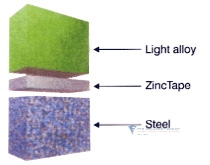 The point of contact between light alloys and iron materials can be subjected to corrosion.
The point of contact between light alloys and iron materials can be subjected to corrosion.
When these two materials get in both electrical and electrolytic contact, a galvanic process begins. The electrolytic contact arises when a solution (usually rain-water) seeps between the two surfaces. This contact can even be caused by signs of dampness between the two surfaces of by a chemical non homogeneity of one of the two surfaces because of the presence of oxides, dirt, ect.
Since the electrochemical potentials of steel and iron materials are more electropositive than light alloys, they can cause corrosion. Therefore light alloys are the sacrificial anode.
These problems can be avoided by means of insulating materials (generally made of plastic or gum, which can be put between the two surfaces, in order to break the electrical and electrolytic contact. But since the insulating material does not stick well and since it wears out quickly, protection against corrosion is no longer guarantee. Its damaging can even cause mechanical problems, so that the two surfaces are no longer connected in the right way this will not happen when employing our ZincTape with electro-conductive adhesive.
Through our zinc coating on the iron surface passive and active protection can be achieved:
- a passive protection due to the homogeneity and isotropy of the coating and to the adhesive, which sticks well avoiding infiltration .
- an active protection because the difference of potential between the two surfaces decreases. The potential of zinc is very similar to that of the light allow and so the zinc tape is the sacrificial anode instead of the light alloy.
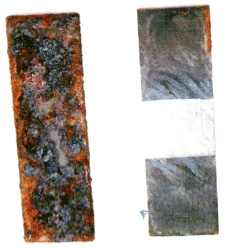 The Zinc Tape must be stuck to the nobler metal. Should there be doubts concerning the electrolytic potentials of the materials, it is advisable to cover both the surfaces with the zinc tape, so that any corrosion attack can be avoided.
The Zinc Tape must be stuck to the nobler metal. Should there be doubts concerning the electrolytic potentials of the materials, it is advisable to cover both the surfaces with the zinc tape, so that any corrosion attack can be avoided.
Scarifying function
The picture on the right show the difference between two iron bars held in a salt and water solution for one year. A 50 mm Zinc Tape coated one of the two bars on its central area. The role played by Zinc Tape as a sacrificial anode is of great importance: although its coating covers only one area of the structure, Zinc Tape protects the whole surface against corrosion.

